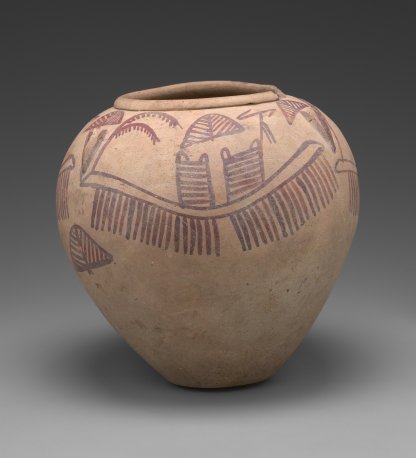Ceramic Vessel with Nautical and Faunal Motifs
Hieroglyphs
Ceramic Vessel with Nautical and Faunal Motifs [ edit ]
Over a thousand years before the invention of the hieroglyphic script, Predynastic cultures in Upper Egypt created symbolic representations of their understanding of the cosmos. On the surfaces of their pottery they painted scenes, and along the rocky cliffs of the Western and Eastern Deserts they carved hundreds of rock art depictions and tableaux. These images are not literal depictions of daily life along the Nile Valley, or simple images of what they saw in the surrounding deserts, but religious, political, and cultural symbols. Often, the painted pottery and rock inscriptions juxtapose Nilotic images--plants, hippopotami, crocodiles, and boats--with icons of the desert--ostriches, desert game, and desert hunters. These combinations of images represent a graphic means of linking and reconciling the paired worlds of desert and Nile. Over time, some individual images or groups of images develop a specific meaning. For example, a stork with a rearing serpent represents the concept of "victory" and can label other images. Although this syntax of images conveying concepts is not true writing, as it conveys no phonetic information and is limited in application, the recognition of the ability of groups of images to convey information across time and space provides the protohistory of writing in Egypt.
Dimensions
H. 22.3 cm x W. 22 cm
Museum
Yale Art Gallery
Accession Number
1937.157













